Live from Wimbledon 2023: Mic’ing up players and boosting behind the scenes access
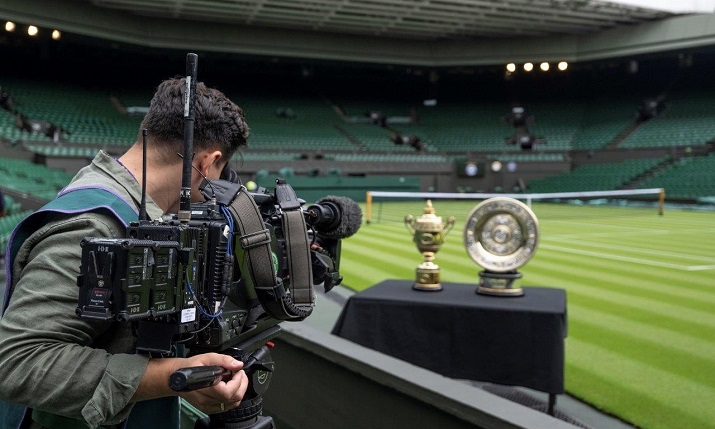
From mic’ing up players to rolling out new GFX and boosting behind the scenes access, Wimbledon Broadcast Services head of broadcast Paul Davies speaks with SVG Europe about the changes to this year’s Championships.
Visitors and viewers alike will have noticed some changes to this year’s Wimbledon Championships. While the annual tennis tournament is steeped in tradition, the approach taken to covering the action in SW19 is always under review and subject to revision, an approach perhaps best summed up by this year’s tournament tag line of ‘Always like never before’.
As part of an overhaul to its editorial offering, one of the most significant changes for this year was the appointment of Whisper as Wimbledon Broadcast Services (WBS) production partner for the Championships for 2023 and 2024. The deal includes production of the world feed, international highlights, a creative preview film and an official film of The Championships.
And, says All England Lawn Tennis Club (AELTC) head of broadcast, production and media rights Paul Davies, the process of appointing the production company “made us think harder and smarter about what we should be doing”.
Speaking with SVG Europe on day nine of the Championships, Davies says Whisper is working across multiple strands of content, pointing to the off-court coverage as one of the areas that has seen the biggest change this year.
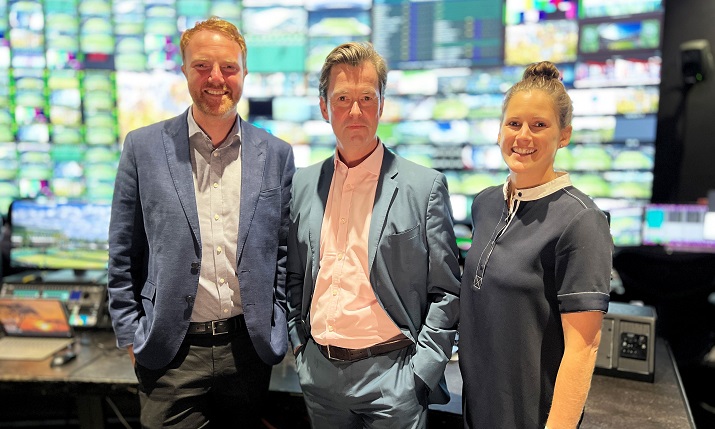
(L-R) James Muir, broadcast technical manager; Paul Davies, head of broadcast, production & media rights; Georgina Green, broadcast & production manager
“We used to have a service called the Wimbledon Channel, which was our own, daily linear programme that sat on our own platforms. A couple of our broadcasters took it, but they found it slightly competitive in terms of what they were offering to viewers.
“They were doing their own Wimbledon coverage, and we were offering an alternative, slightly different service. There were some reserved rights that meant we could show one game per match per hour, so they didn’t particularly like it. It had served us well over I think the eight or nine years that it had been running, but we looked at it and thought, ‘is this the best service we can provide for both ourselves and to our broadcasters? And we felt could we actually provide something a bit different, which they could integrate into their coverage.”
In response, Davies and his team worked with Whisper to create ‘Access all England’, a daily, linear offering of behind the scenes content that runs from 9am to 5pm.
“It’s a production of the very best of the behind-the-scenes cameras, all the beauty cameras as well – probably up to 35,” says Davies. He explains that previously, broadcasters “lost” the players once they arrived.
“We didn’t see them again until they walked on the court. So we wanted to offer the broadcasters, and on our own platforms, that unique experience of coming to Wimbledon and seeing all of this for themselves.
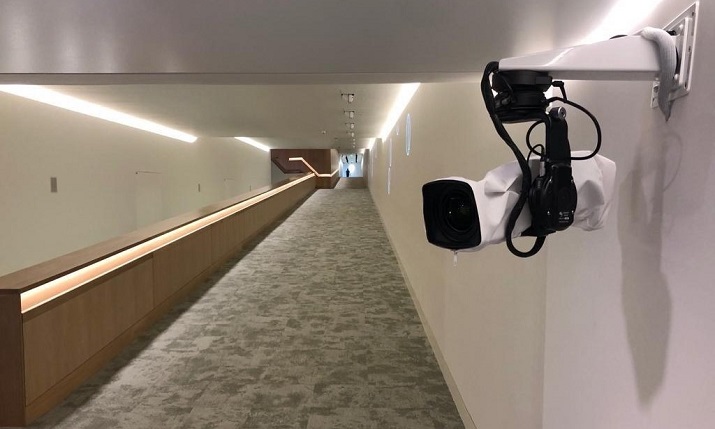
One of the new robotic cameras, operated by ACS, that provides greater behind the scenes access
“So we now see the players getting out of their cars, going through the beautiful new Indoor Tennis Centre where we have installed five robotic cameras, under the tunnel into the Millennium Building and in these new environments that we didn’t have covered before, like the players lawn where we now have a new robotic camera, the restaurant and corridors of the clubhouse. All these images people won’t have seen before.”
In addition to the robotic cameras, coverage is supplemented by handheld cameras following the players.
“It all means that broadcasters are getting ever changing images of all the players in different environments, which the broadcasters are absolutely loving. They can also put requests in through our Quality Control Centre there to cover a particular player. So, if a broadcaster has no facilities on site, then by taking all the court feeds and Access all England, they can still create a really rich offering.”
Davies says that shift was driven, in part, by documentary series such as Box to Box production Break Point gaining greater access to players while broadcasters looked on and questioned their own access.
Fighting the pirates
Piracy is another area of focus for WBS this year, with LaLiga Tech recruited to help counter illegal stream.
“Their numbers are extraordinary in terms of what they’ve already taken down,” says Davies. “During the first eight days of the Championships, it matched the previous seven years of what we had taken down. What they’re finding, and what they’re taking down is, is extraordinary which is very reassuring for us, but also for our broadcasters who need their assets protected.”
“Broadcasters are paying very decent rights fees, and perhaps not being afforded the same privileges, which WBS and wider AELTC is very sympathetic to. That easing up of access, which had been quite guarded in previous years, I think the club is getting more comfortable with, and the players are more familiar with cameras behind the scenes, but in a respectful way.
“And the beauty of us doing it in house as WBS is we can work with, obviously the club, but also with the players and their representatives. There’s certain environments and situations, where we’re cautious; we don’t show big close ups of people eating, for example.”
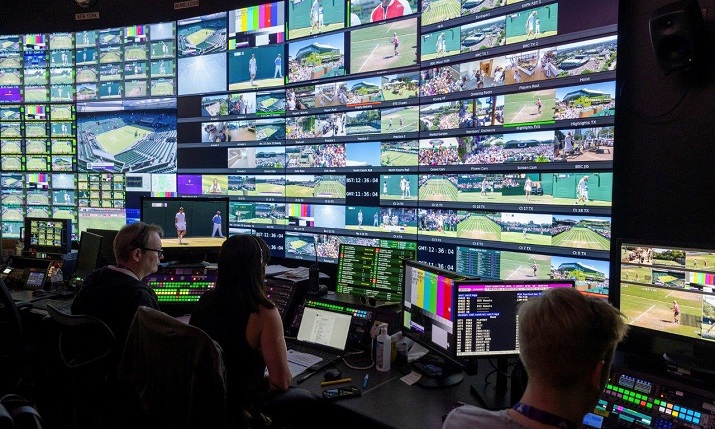
Other strands developed by WBS and Whisper include a one-hour linear programme called the Aorangi Hour, presented from the Aorangi practice courts 12-1pm, plus “bite-sized” content such as daily fashion show ‘Wimbledon Threads’ and interviews on the purple carpet as players and VIPs arrive. The aim, says Davies, is to create content that is “broadcaster agnostic”.
Mic’ing up players
Ahead of the start of the Championships, players including Andy Murray and Novak Djokovic, were given ear buds connected to a Riedel Bolero wireless intercom system so they could be interviewed during a practice match on Centre Court. The inspiration came from the Masters at Augusta, where commentators were able to speak directly with Rory McIlroy.
“We did that on Centre Court with Novak Djokovic, Andy Murray and his coach Ivan Lendl who were able to speak with Tim Henman to create some different content that is not them sitting them down in a chair being interviewed.
“It’s more of a casual chat as they’re playing tennis, so Djokovic is able to articulate what it was like to come back on the Centre Court on the eve of the Championships, and the emotions that go with that.
“And the humour between Murray, Lendl and Tim was quite unique and provided great content. And we’re doing that for our own platforms and the broadcasters.”
Regular visitors to the Media Centre, nestled between Courts 18 and 14, will have noticed a change to their surroundings following the completion of a multi-million-pound, two-year project that includes a new Media Theatre for press conferences and new stand-up presentation positions for broadcasters.
“These are beautiful environments that we encourage our broadcasters to present from,” says Davies. “We love to get them out in the British sunshine, rather than stuck in studios, and they like to do that too. The changes we have made also make it easy to move players from the press conferences to stand-up positions, and to the new one-on-one, virtual interview room which Moov has designed and built for us, which we’re very proud of.”
More on Wimbledon 2023:
- Upping UHD-HDR coverage of the Championships
- New production partner Whisper serves up expanded Wimbledon coverage
- Wimbledon 2023: Ron Chakraborty reflects on production schedule changes, a new presenter, and another successful Championships for BBC Sport
- Wimbledon 2023: ESPN airs on-court interviews and commits to ‘bigger, better, bolder’ coverage
- ACS delivers more behind the scenes shots
- Moov creates virtual set for Wimbledon Broadcast Services
- Luna Remote Systems make Wimbledon debut with High Speed Falcon 1D
- The Championships teams with LaLiga Tech Content Protection Services to stamp down on piracy for Wimbledon 2023
The process of reviewing how images and audio is captured, produced and distributed begins soon after the trophies have been lifted.
“James (James Muir, AELTC broadcast technical manager) and I spent the close season examining every single camera position on every court,” says Davies.
“Last year, we had the new central walk on for Centre Court, so we had to address that differently last year, which we did. There was a fantastic shot looking through the clubhouse to the players going through that central entrance, so we decided that this year, we’re going to put an RF camera at the front of the clubhouse to get that wonderful, shadowed look as the players enter Centre Court, drifting in from the clubhouse doors to give it context of where they are.”
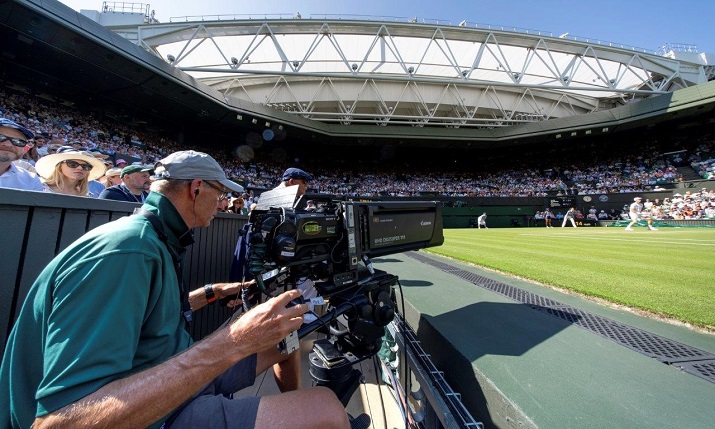
“We fundamentally changed No.1 Court coverage this year by switching the player profile cameras – three and four – to the other side.
“For many years, that had been a challenge because of the infrastructure in the pits, which have slightly changed, and the pressures of photography, and so on. We had the option to switch them to look towards the umpire’s chair and the players when they’re sitting down, which is a much more natural angle and brings it in line with Centre Court, and the directors are saying it’s a vast improvement.”
It’s not just changes to the immediate environment that can prompt alterations to camera positions; adjustments to the way the game is played can also require a change in view.
“You look at how far the players are standing back there pretty much back against the canvas. So we look at the positions of the master camera shots as well. It would be very easy just to leave the cameras where they were, to get last year’s file off the shelf and say, ‘same as last year’. We don’t do that. We look at every single court, and we get feedback from all the directors, the commentators and the broadcasters, most essentially, because they are taking the product, and we always want to make it better.”
Another of those areas is graphics. IBM is the main official data supplier, but within that agreement are several different specialist providers, including SMT for TV graphics interface, Hawkeye for player and ball tracking and this year WBS has brought in TennisViz which provides algorithmic software to process ball and player tracking data for real-time analysis.
“TennisViz analyses every single shot within a rally, which means that the depth of the data that they’re collecting, including umpires’ data, the point-by-point scoring, along with the Hawkeye data of player and ball tracking, all goes through their unique algorithm and IP. That means they can come up with some absolute unique data insights which we’re putting to air which have been revelatory and the commentators are loving it because it backs up what they share with viewers,” says Davies.
The response to all these additions and adjustments from broadcasters has been positive, says Davies.
“Beyond the basic facts that we’ve got 45 broadcasters on site, when we look at the number of downloads and the amount of content we’ve produced, we’re probably up to about 3,000 assets that we’ve produced. And we’re well over 10,000 downloads already from MediaBank and the central content store. So that provides us with feedback, along with the anecdotal messaging we’re getting from our broadcasters every day. That, and the numbers, are telling us that we’re doing something right.”

